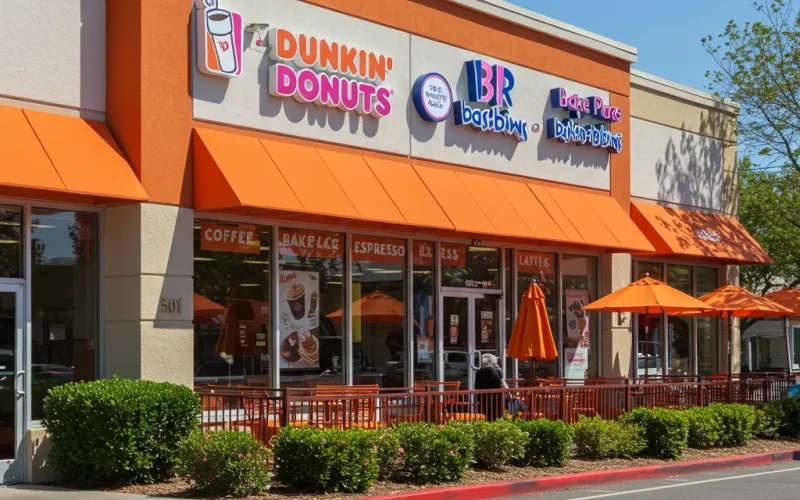Design of Exhibition and Storefronts: In today’s world, the success of any commercial project largely depends on an attractive and professional storefront or exhibition design. The facade is the first point of contact between the customer and the store, determining whether a potential customer will stop to look or not. Therefore, facade design is not just an aesthetic matter but a powerful marketing strategy that enhances brand appeal and increases sales opportunities.
In this article, we will explore the importance of designing exhibition and storefront facades, best practices in this field, and key factors to consider when designing facades. We will also provide practical examples with illustrative data tables and creative ideas supported by images.
The Importance of Exhibition and Storefront Facades
- The Initial Impact on Customers
- The facade is the first thing customers see when visiting a store. If it’s distinctive and appealing, they are more likely to feel curious and enter the shop.
- Enhancing Brand Identity
- The facade can directly reflect the brand identity through colors, fonts, and lighting used.
- Improving Customer Experience
- Fascade design indirectly affects the customer experience. When the facade is eye-pleasing and filled with thoughtful details, it leaves a positive impression on customers.
- Increasing Sales
- Attractive facades encourage customers to enter, thereby increasing sales opportunities.
Best Practices in Designing Exhibition and Storefront Facades
1. Choosing the Right Colors
Colors play a pivotal role in attracting customers. Each color conveys a specific message, and it’s important to choose colors that reflect the nature of the products and services offered.
|
Color
|
Message
|
Common Uses
|
|---|---|---|
|
Red
|
Energy, enthusiasm
|
Restaurants, sports clothing stores
|
|
Blue
|
Trust, calmness
|
Banks, pharmacies
|
|
Green
|
Nature, sustainability
|
Organic grocery stores
|
|
Yellow
|
Happiness, positivity
|
Children’s stores, coffee shops
|
2. Smart Lighting
Lighting is an essential element in facade design. It can be used to highlight key elements of the facade or create specific atmospheres.
- Direct Lighting : Used to focus on signage or branding elements.
- Indirect Lighting : Creates comfortable and relaxing environments.
- Colored Lighting : Attracts attention and creates a unique visual signature.

3. Materials Used
Selecting the appropriate materials plays a significant role in determining the quality and longevity of the design.
|
Material
|
Features
|
Drawbacks
|
|---|---|---|
|
Glass
|
High transparency, reflects elegance
|
Fragile, requires regular maintenance
|
|
Wood
|
Natural, warm
|
May deteriorate over time
|
|
Metal
|
Durable, modern
|
Can be expensive
|
|
Natural Stone
|
Durable, adds aesthetic value
|
Heavy, requires professional installation
|
4. Simple and Elegant Design
Simplicity in design makes the facade more attractive. Avoid excessive details that may distract attention.
Key Factors to Consider When Designing Exhibition and Storefront Facades
- Target Audience
- The design should be tailored to the target audience. For example, a children’s store should feature bright colors and playful shapes.
- Store Location
- The store’s location significantly influences facade design. If the store is in a crowded area, the facade must be clear and distinctive.
- Size and Space
- The facade size should match the store’s size. Overly large facades may seem excessive for small stores.
- Modern Technology
- Using digital screens and LED panels can enhance the facade’s attractiveness and allow easy content updates.
Practical Examples of Successful Facade Designs
1. Luxury Fashion Store Facade
- Design : Use transparent glass with an elegant metal frame.
- Lighting : Hidden internal lighting highlights the products.
- Materials : Reflective glass and polished metals.
2. Car Showroom Facade
- Design : A large facade with sliding glass doors.
- Lighting : Strong external lighting focuses on the cars.
- Materials : Glass and aluminum.

Additional Tips for Successful Facade Design
- Use Visual Balance
- Distributing elements evenly helps create a balanced and attractive design.
- Pay Attention to Small Details
- Even the smallest details, such as handles or frames, can make a big difference.
- Maintain Harmony with the Surrounding Environment
- The design should harmonize with neighboring buildings.
Conclusion
Designing exhibition and storefront facades is both an art and a science. Success in this field requires a deep understanding of customer needs, the use of modern technology, and adherence to best practices. Whether you run a fashion boutique, a restaurant, or a car showroom, an attractive facade will always be your first step toward success.
Comparison Table of Facade Types
|
Type
|
Cost
|
Advantages
|
Disadvantages
|
|---|---|---|---|
|
Glass Facade
|
Medium to High
|
High transparency, appears modern
|
Requires regular maintenance
|
|
Wooden Facade
|
Medium
|
Warm, natural
|
May deteriorate over time
|
|
Metal Facade
|
High
|
Durable, suits modern design
|
Can be expensive
|
 العربية
العربية
